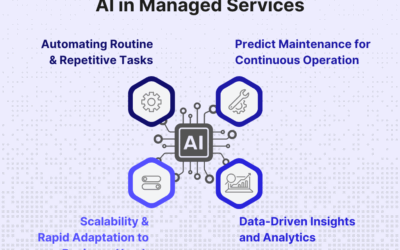If you’re running a business, chances are you’ve dreamt about automating your marketing operations. Imagine the time you’d save, the efficiency you’d gain. And sure, automation has a lot to offer. But before jumping into automation, there’s some crucial groundwork you need to lay down.
Automation is a powerful tool, but it’s not a cure-all. Automation will only amplify what’s already in place—good or bad. If your foundation isn’t solid, you’ll only automate inefficiency. So, here’s what to do first to make sure automation works for you, not against you.
Why Marketing Automation Isn’t a “Set It and Forget It” Solution
One of the biggest misconceptions about marketing automation is that you can simply switch it on and watch the magic happen. But marketing automation is more like a treadmill than a self-driving car. You still need to put in the effort to get the benefits.
Automation will streamline tasks, but it won’t solve poorly defined processes or mixed messages. Automation amplifies what’s there, so if you’re working with cluttered data, conflicting messages, or undefined customer personas, you’ll be automating chaos. To get the best ROI, you’ll need a clear, tested process as the foundation.
Step 1: Establish a Clear Marketing Framework
Let’s start with the basics. Before you add technology into the mix, you need a well-defined marketing framework. Think of this as your automation blueprint. A solid marketing framework should cover the following essentials:
- Audience Segmentation: Who are you trying to reach? Different groups need different messages, so segmenting your audience helps keep your messaging on target.
- Consistent Messaging: Identify your core message and ensure it’s consistent across all platforms. Automation can’t fix mixed messages, so clarity here is key.
- Data Hygiene and Management: Messy data leads to missed opportunities and inefficient automation. Regularly update and clean your data, so when it’s time to automate, you’re only working with high-quality information.
Step 2: Document Your Processes Across Channels
Automation works best with consistency. When processes are clear and repeatable, automation enhances them seamlessly. But if each platform is running on a different playbook, automation will only complicate things.
- Standardize Workflows: For each channel (email, social media, website, etc.), outline a step-by-step process. Document it in detail so it’s easy to see where automation fits in and where human touchpoints are required.
- Ensure Cross-Channel Alignment: Your email campaigns, social media posts, and website messaging should all align to tell the same story. Confusion is costly, so making sure every channel speaks the same language keeps your automation—and your audience—on track.
Step 3: Select the Right Tools for Your Needs
The marketing automation world is full of flashy tools, each one promising to revolutionize your workflow. But just like any other tool, the best automation software is the one that fits your needs. Don’t be swayed by features you won’t use or don’t need—focus on what matters to your business.
- Match Tools to Goals: If you’re a growing business focused on lead generation, look for automation tools that excel at capturing and nurturing leads. Avoid tools that bring unnecessary complexity.
- Be Wary of Tool Overload: It’s tempting to collect tools for every marketing task. But too many tools can create confusion and increase the risk of overlapping functions. Start with one or two that fulfill multiple needs well, and only expand if you’re sure it will add real value.
Step 4: Start Small with a Pilot Test
Resist the urge to automate everything at once. Start with a small pilot project to test your setup. Pick one area—say, email campaigns or social media posts—and automate it on a trial basis.
- Track Key Metrics: Use metrics like open rates, conversion rates, and engagement to measure success. This will give you insights on what works and what needs adjusting.
- Analyze and Refine: Pilot testing allows you to make necessary adjustments before a full rollout. You might discover that some processes need refining before they’re ready for automation.
Step 5: Scaling for Success
Once your pilot project runs smoothly, you’re ready to scale. But don’t fall into the “set it and forget it” trap just yet. Scaling involves continuous improvement. Here’s how to scale effectively:
- Refine Based on Insights: As you automate more processes, keep an eye on real-time data. Use what you learn from early automation projects to fine-tune future ones.
- Routine Assessments: Make it a habit to evaluate both your automation tools and your internal processes every few months. Automation is most effective when it evolves with your business.
Conclusion: Lay the Groundwork First, Automate Second
Automation can transform your marketing operations, but only when you’ve got a strong foundation in place. Take the time to segment your audience, document processes, clean your data, and test with a pilot project. It’s a strategy that pays off with efficiency, precision, and—most importantly—better results. The right groundwork makes all the difference. So, take it one step at a time, and soon enough, you’ll be reaping the rewards of well-executed automation that truly serves your business.




0 Comments